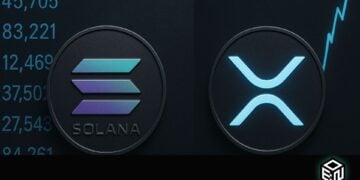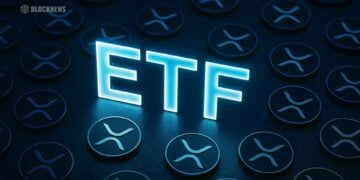- The SEC has been doing a Crypto Crack down which is affected many crypto entities operating in the U.S
- The SEC lawsuit comes just months after the CFTC lawsuit against Binance, mounting its regulatory woes in the United States
- The SEC’s war against crypto will move blockchain innovation to elsewhere leaving the U.S behind in this technology.
The United States Securities and Exchange Commission (SEC) has filed charges against Binance, its U.S.-based exchange entity, and its CEO, Changpeng “CZ” Zhao, for violating securities laws.
On June 5, the SEC filed 13 charges against Binance in the U.S. District Court for the District of Columbia over allegations that the company misled investors and misused customer funds. The accusations of mishandling customers’ funds and violations of U.S. banking regulations were first flagged in a report published by Reuters in the last week of May. At the time, Binance had refuted all allegations, calling the information a list of conspiracy theories.
According to the regulator, Binance has been mixing “billions of dollars” in user assets and covertly moving them to a different firm under CZ’s control. The accusations included misleading investors by misrepresenting the effectiveness of the company’s mechanisms for identifying and preventing manipulative trading.
Regulators further alleged that Binance needed to do more to prevent American investors from using its unlicensed exchange. Some of the key allegations in the lawsuit include:
- Zhao and Binance secretly controlled the Binance.US platform’s operations behind the scenes.
- Zhao and Binance exercise control of the platforms’ customers’ assets, permitting them to commingle customer assets.
- BAM Trading (the entity controlling Binance.US) misled investors about non-existent trading controls over the Binance.US platform.
- Binance and BAM Trading operated unregistered national securities exchanges, broker-dealers, and clearing agencies.
- Binance and BAM Trading were involved in the sale of securities, including Binance’s crypto assets; the exchange token, a stablecoin, Binance USD; certain crypto-lending products; and a staking-as-a-service program.
The list of 13 charges against the crypto exchange by the SEC comes within months of another lawsuit filed by the U.S Commodity Futures Trading Commission (CFTC) in March, which invoked various reactions from the crypto community, with the most prominent being the divide over Binance’s approach — referred to as “Tai Chi” — and U.S. regulators alleged “Operation Chokepoint 2.0.”
The “Tai Chi” reference comes from a 2020 Forbes report alleging Binance had taken a series of steps to evade regulators in the U.S., citing a document labeling it the “Tai Chi entity.” Tai Chi is a Chinese term used to describe a method to avoid responsibility. At the time, Binance threatened to sue Forbes over the claims.
Operation Chokepoint 2.0 is the term used by Coin Metrics co-founder Nic Carter to refer to an alleged effort by U.S. lawmakers and regulators to stifle the crypto industry’s growth.
Both theories resurfaced on June 5 after the SEC lawsuit, with Cardano founder Charles Hokinson fuelling the Operation Chokepoint 2.0 theory. Hoskinson claimed the SEC’s next in a series of steps is “to implement chokepoint 2.0 in the United States. The end goal is an agenda-based CBDC [central bank digital currency] partnered with a handful of massive banks and end-to-end control over every aspect of your financial life.“
Some members of Crypto Twitter who have been voicing their concerns about Binance’s regulatory troubles claimed that the Operation Chokepoint 2.0 theory is nothing more than a conspiracy, as the exchange was selling securities.
Tai Chi was referenced in the SEC lawsuit itself, leading some members of Crypto Twitter to recall the 2020 report.
Many crypto community members believed the lawsuit against Binance was unusual, given the regulator rarely names executives. Thus, Binance might be looking at a massive settlement at best.
Others quickly reminded the public that the charges are against Binance’s U.S. arm, which handles a small portion of the exchange’s global trading volumes.














